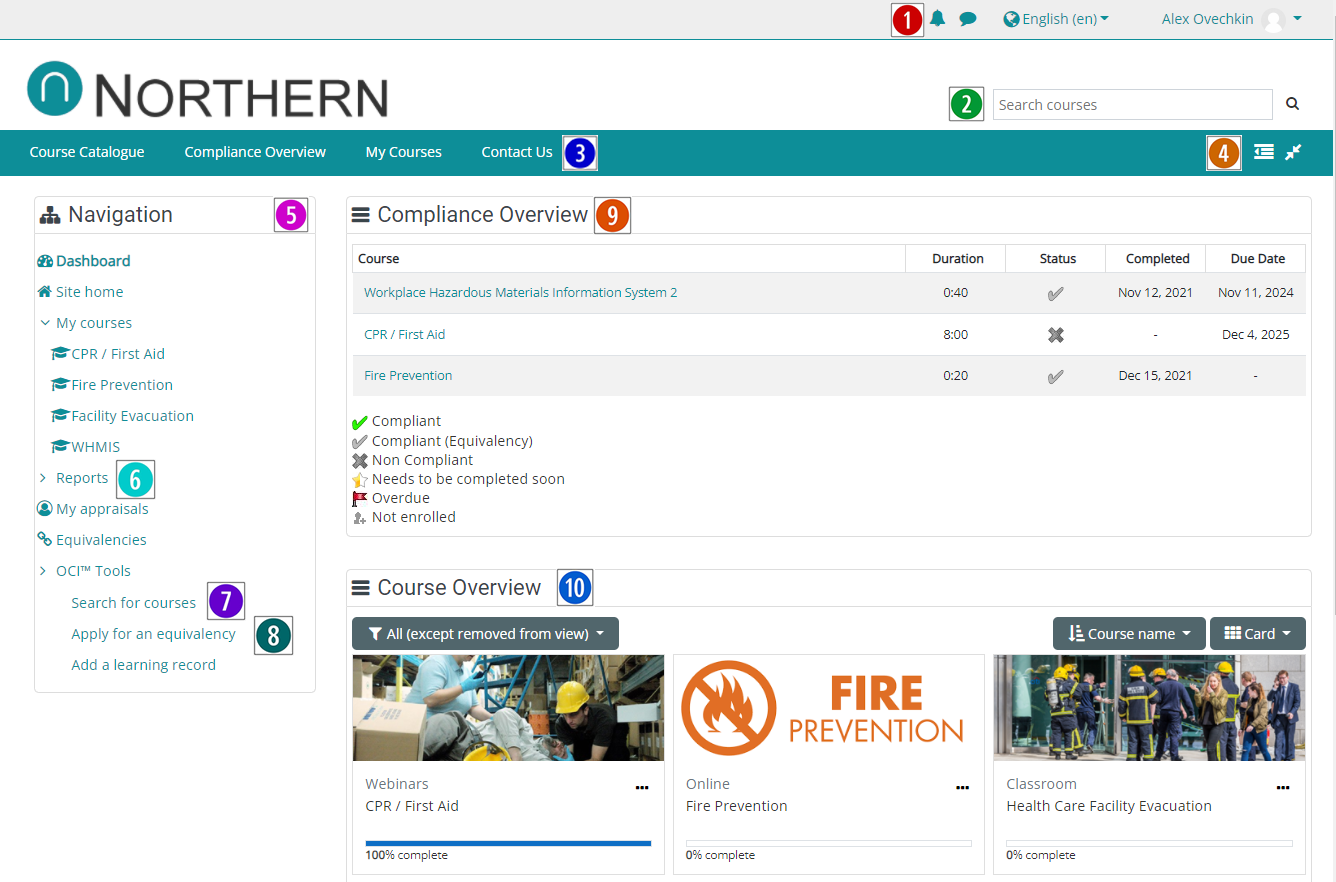Once you sign in, you will be redirected to the learning environment's home page. While the home page can vary from site to site, generally speaking, most learner's will be redirected to a dashboard similar to the one below. The following 10 elements, which match with the numbers 1-10 on the screenshot, are worth highlighting.
-
The bar at the very top bar contains a few elements, including (from left to right) a notifications icon, a messaging icon, the ability to change your preferred language and your name. If you click on your name in the top right corner, a sub-menu will appear allowing you to complete certain tasks like edit your profile and change your preferences and password.
-
Immediately below that is generally a search tool. This search tool allows you to find courses by title, description or ID number. The search tool will search for courses in the learning environment you are currently logged in, but will also scan the entire OCI (Open Collaboration Initiative) network, which includes hundreds of courses offered by other healthcare providers and subject-matter experts. These courses are often accredited and can be used for continuing education credits.
-
Next up is the top navigation bar. While each site may slightly vary the menu items presented on this bar, they generally contain shortcuts to the most popular areas of the site, such as the Course Catalogue, the Compliance Overview, your entire list of courses, and a Contact Us or FAQ page.
-
On the right end of the navigation bar are icons that allow you to hide the left hand blocks and toggle the screen from "regular" to "full screen". This tool allows you to maximize the screen when watching videos or reading reports.
-
Below that and on the left is a "Navigation" block. This block generally contains links to popular areas of the learning environment, including a link back to the dashboard / home page.
-
In that blocks is a section called "Reports". The reports may vary depending on the applications deployed in your learning environment, but in all cases, they will contain a "Learning History", which is a central place where you can view all the courses you've completed in the past, including OCI courses (more on OCI in the next bullet), and download a certificate of completion if one is available.
-
Below that is another section called "OCI Tools". OCI, which stands for "Open Collaboration Initiative", is a tool designed to help learners find courses offered by other organizations (outside of your current learning environment). Documentation and more details on OCI are available here.
-
Immediately below that is a link that allows you to apply for equivalencies. This link allows you to upload proof of completion for courses that you may have completed in the past or in some 3rd party's learning environment that's not connected to the OCI framework.
-
On the right is the "Compliance Overview" block. This block is only available on learning environment that offer mandatory training, such as hospitals or healthcare organizations that train their staff. The Compliance Overview block lists the courses that your organization has already enrolled in and generally states the duration of each course, your compliance status, when you last completed the course (if applicable) and when the course needs to be completed by (the due date) next.
-
Below that is a "Course Overview" block. This block lists all courses you are enrolled in (mandatory and optional) and allows you to filter these courses (by title, by "last access" or even by "favorites") and see your progress within individual courses.

